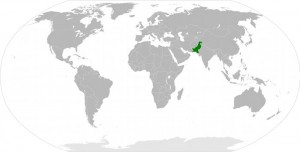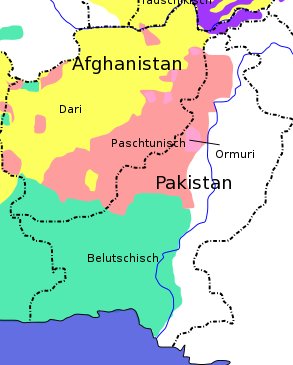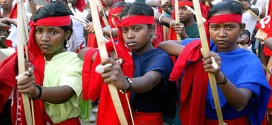Until the Soviet Union invaded Afghanistan in 1979, hardly anyone knew neither Afghanistan nor Pakistan. Through the struggle against the Soviet Union the West became increasingly aware of this region of the world. The mujahideen, the heroes of the Hindu Kush, which drove the Communists out of the country, have caused great admiration all over the world. The West feared that the Soviet Union would manage to increase its influence down to the Indian Ocean, respectively the Gulf of Persia and wanted to avoid this scenario at all costs. As strategic partner, only one country was to be considered and that was Pakistan. Iran, which for a long time was the principal partner of the U.S. in the Gulf region had broken off contact with the Sheitan Akbar (Great Satan) after the Islamic Revolution under Khomeini.
This shows strategically the absolute importance of Pakistan in the fight against the Soviet occupation of Afghanistan. An alternative was not available and thus the circumstances developed a strong relationship between the U.S. and Pakistan. Beneficial here may be the important role of the military in Pakistan, which is a kind of national binder. The military is fully in British tradition and the cultural understanding between the U.S. and Pakistan must have been unproblematic at this level.
The consequences of the invasion
The consequences of the the Soviet invasion were devastating for Afghanistan and Pakistan. Afghanistan’s death toll was estimated at about 1 to 2 million deaths and about 10 millions Afghans fled, two thirds to Pakistan.The latter means that almost 10 percent of Pakistan’s population in the eighties (about 80 million people) were refugees. This had enormous consequences for Pakistan. If one imagines the current (2011) refugee policy and discussion in the EU, even 25,000 refugees from North Africa are not acceptable to Europe with a population of 500 million people.
Artificial boundary – the Durand Line
The large accomodation of refugees shows the great affinity of Pakistanis with the Afghans. This has mainly ethnic reasons. The northwestern border of Pakistan is an artificial one, created during the British Raj (British colonial era) and stretches 2500 km directly through the land of the Pashtuns, which represent the largest population group of Afghanistan.
This boundary line has a name and is called the Durand Line after the British colonial administration foreign secretary Sir Mortimer Durand. The British had fought a total of three wars against Afghanistan, the first two were probably the most important ones. The first Anglo-Afghan War (1839-1842) was lost by the British, which was a traumatic experience for them, as they were mainly victorious on the Indian subcontinent. Only in the second Anglo-Afghan War, the British could establish themselves and were able to enforce their territorial gains in 1880 and secured it with the aforementioned Durand Line.
Map of the Land of the Pashtuns
Afghanistan’s influence in Pakistan
Theoretically one could say that a part of Afghanistan lies in Pakistan. Thus, it is also clear that political affiliations in the region of the North West are inevitable. In adition there are the many refugees who settled mainly in the larger cities, as in the million cities Islamabad, Karachi or Lahore. If Pakistan today is viewed as an unreliable partner in the fight against terror, one must take into account this situation. The central government, which already navigated through a long-standing political storm, has only a limited impact on the Afghan-Pakistani relations. A state official from Karachi, who works professionally in the north-west Pakistan, is indeed in Pakistan, but is de facto considered a stranger. Not in the sense of xenophobia, more as a degree of detachment. An Afghan Pashtun, however, moves in north-west Pakistan like a local.
Moreover after the British withdrawal and the subsequent independence of Pakistan some people were ambitions to reunify Northwestern Pakistan with Afghanistan. This demand is not particularly strong today, but it is a good pressure on the government so that the North West is left alone and enjoys much political autonomy.
Conclusions
Past events explain why Pakistan’s northwestern region occupies a special position in Pakistan and is very strongly related to Afghanistan. Sometimes the bond between Northwestern Pakistan and Afghanistan is even greater than with the remaining part of Pakistan. This means that there are always groups in Pakistan which are supporting the Afghan Taliban and loyalty in this context allied al-Qaida members. The central government is virtually powerless in this case, since the region is practically beyond the reach of official agencies. You can compare this situation with the Mafia in southern Italy, where one can observe a state within a state situation, where the central Italian government is powerless as well. In recent decades the official Pakistan has shown that it fights on the side of the West and has made many sacrifices in this regard. But the state does not penetrate all parts of the country and regions such as the Nord-West seem to escape the control of the central government.
 Dorsum – The Ethnopolitcal Blog Worldwide Ethnopolitical Analyses
Dorsum – The Ethnopolitcal Blog Worldwide Ethnopolitical Analyses





